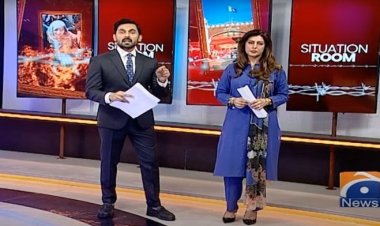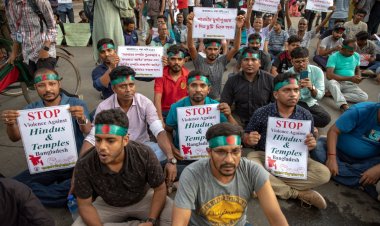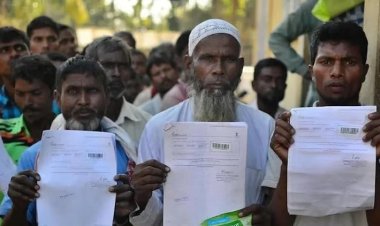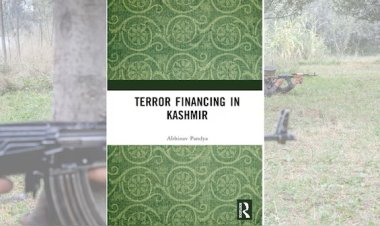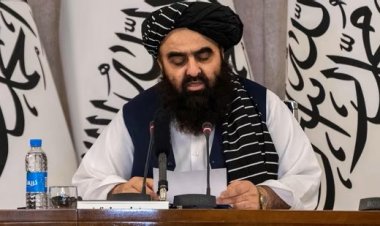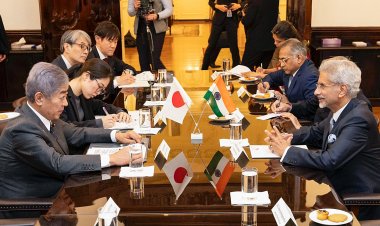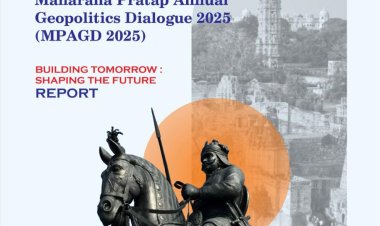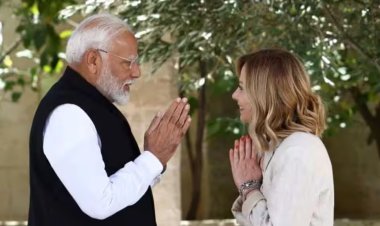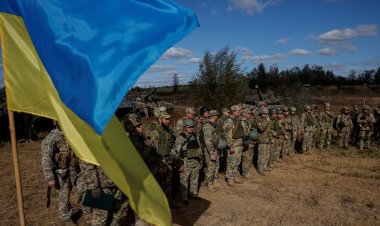Tibetan Buddhism's Evolutionary Dynamics in Arunachal Pradesh: A case study for the interplay of faith and geopolitics
This article looks at the significance of Tibetan Buddhism in the ambit of Indo-China relations. By looking at Buddhism in the current Sino-Indian relations as an intractable issue in the border dispute of India -China in the eastern sector of LAC, especially in the Tawang region due to its regional significance and strategic location, this article further seeks to analyse the evolution of Tibetan Buddhism in the Tawang region.
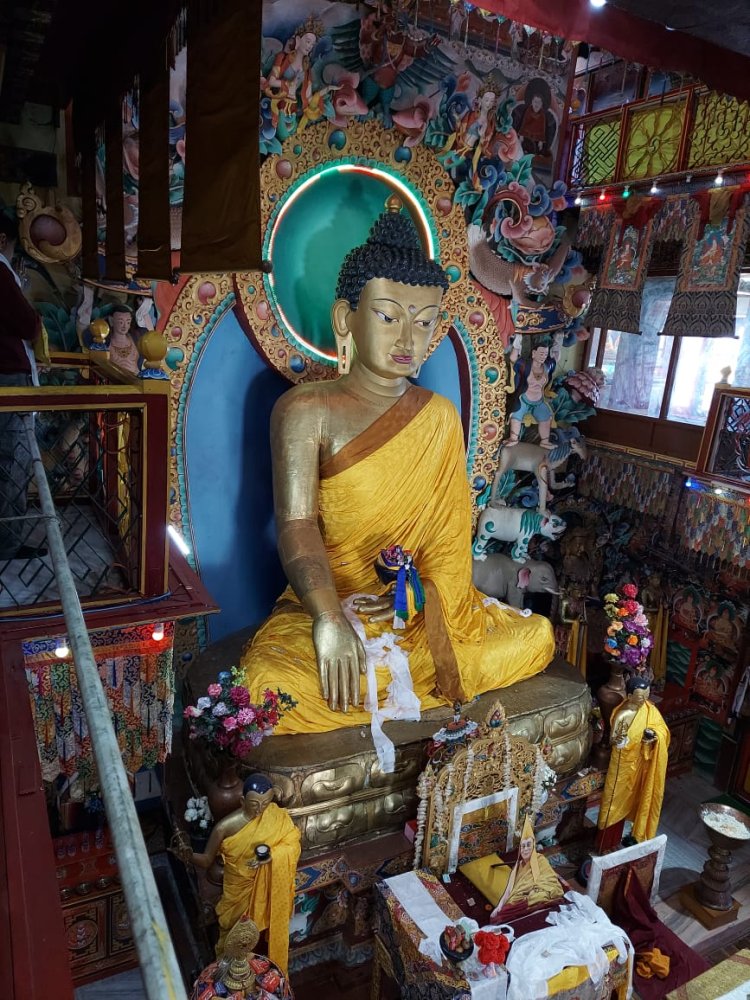
Analysis
By Preeti Khenta
Buddhism was important for both, the Indian subcontinent and China for approximately one millennium and there were interactions as Indian translators went to China and Chinese pilgrims to India. Benoy Kumar Sarkar (1916, also 1922), Liang Chi Chao (Liang 1924), and Tan Yunshan (Tan 1999; also Tsui 2010), exemplified a Buddhist – centered history as a model for China- India relations in the modern era. A high-profile, Buddhist goodwill mission led by Tan Yunshan’s teacher, Taixu, from China to India in 1940 was an attempt to shape further China–India civilizational unity, although he was hampered by the “dearth” of Indian Buddhist monks and monuments in India. Buddhism came to China in the second and third CE primarily through Central Asian networks. The first Buddhist temple was the White Horse Temple in the Eastern Han capital of Luoyang established in 68 CE with the arrival of two Indian monks, Kasyapa Matanga and Dharamratna. However, after the third century, the level of popular interaction between Chinese and Indians was quite limited and Chinese Buddhism had developed criticisms and rejection of Indian Buddhism and the relations were more to trade than to religion. The geographic focus was also shifted after the eighth century while India maintained an intimate relationship with Tibet through Tantric Buddhism. On the other hand, Chinese Buddhism had its own sphere of influence through the Chinese schools Chan and Pure Land in East Asia which spread into Vietnam, Korea, and Japan. However, in 1949, China proclaimed and officially remains an avowedly atheist Marxist- Leninist state under the ruling CCP led by Xi-Jinping since 2012. The BAC (Buddhist Association of China) was set up in 1953 as a way for state control, but the religion was denounced during the 1950s and the adherents were persecuted during the Cultural Revolution. However, since the 1990s, there has been evidence that in the wider Han Chinese circle, there has been a return of interest in Tibetan Buddhism which has not been seen earlier. Moreover, promoting China’s version of Buddhism and the symbolic authority of government-selected figures such as Gyaincain Norbu, China’s appointed Panchen Lama – helps to counterbalance the influence of the Dalai Lama and the Tibetans caused outside China. The Panchen Lama was also appointed as the Vice President of the Buddhist Association of China (BAC) and he came complete with his internal and external pledges that he would “uphold the leadership of the Communist Party of China […], safeguard national unification, play a role in building a ‘harmonious society,’ and expand Buddhist exchanges.”
Buddhism in China
Xi-Jinping also made efforts by deliberating using Buddhism in delineating his public vision of China’s place in the modern world. At the UNESCO headquarters, Xi unfolded the following story: Buddhism originated in ancient India. After it was introduced into China, the religion went through an extended period of integrated development with the indigenous Confucianism and Taoism and finally became […] Buddhism with Chinese characteristics […]. The Chinese people have enriched Buddhism in the light of Chinese culture and developed some special Buddhist thoughts. Moreover, they also helped Buddhism spread from China to Japan, Korea, Southeast Asia and beyond. However, China has its own Sino-Centric Middle Kingdom world- with India thereby superseded. His phrase “with Chinese characteristics” (有z红果特色, you Zhongguo tese) has also been applied by the Chinese government to concepts like “democracy” and “international relations” for equally political motives.
Buddhism in India
On the contrary, India has been trumped by using Buddhism in its soft power as it is the birthplace of Buddhism and was iterated by Prime Minister Narendra Modi in 2015, “The time has come for us to realize the potential of soft power as an important strategy for external affairs and foreign relations […]. Soft power is becoming increasingly critical in world affairs […]. India should leverage its great traditions and culture in forging ties with countries around the world in a way that is deeper, more personal, and therefore, far more powerful […]. Countries that have Gautam Buddha […] as part of their own culture have a bond with India that transcends diplomatic ties. In the domain of soft power India has a lot to offer to the world”.
India has the advantage of having the historical founder Gautama/ Shakyamuni in its public diplomacy. He was born in Nepal’s Lumbini but was adopted as a son of India. It was in India that he obtained enlightenment in Bodhgaya, thereby gaining the title of the Buddha, the “Enlightened One.” He gave his first sermon in Sarnath and continued teaching Dharma and set up a continuing community: the Sangha and finally took Samadhi in Kushinagar in India. These places have been linked together in the “Buddhist Circuit” by the Indian Government and became a powerful tool for diplomacy. It was acknowledged by previous external ministers such as Pranab Mukherjee and he claimed Buddha’s mantle for India: We can rightfully be proud that India is the janm-bhoomi [“land of birth”] and karma-bhoomi [“place of work”] of this great son of ours. It is also a matter of pride for all Indians that it is we who nurtured and developed the Buddha’s teachings and spiritual traditions at Nalanda, Vikramsila and other Buddhist centres after his parinirvana. He invoked Buddhist missionaries from India that Buddha’s message of peace and tolerance was carried abroad by Indians which has a broad range of geographical areas: Mahinda, the son of Emperor Ashoka, [carrying the message] to Sri Lanka, […] Padmasambhava to Tibet, […] Kashyapa Matanga and Bodhidharma to China, and […] countless others to the vast swathe of our world from Central Asia to the islands of Japan. Likewise, Narendra Modi has also invoked Buddha and Buddhism and has taken significant efforts by rediscovering ancient Buddhist sites in Gujrat. During a Buddhist Heritage Seminar organized in Gujrat in 2010, he celebrated the modern “relevance” of Buddhism and, irritatingly for China, went on to praise the “authority” of the Dalai Lama. He continued to make a point by attending international Buddhist conferences and other Buddhist-related events. This year, on 20th April, he spoke at the inaugural session of the Global Buddhist Summit in New Delhi organized by the Union Ministry of Cultural Affairs in collaboration with the International Buddhist Confederation (IBC) and stated that from armed conflicts to ecological crises, there is no challenge faced by the modern world that can not be solved if one draws from the centuries-old teachings of Lord Buddha and also listed initiatives to revitalize Buddhist traditions taken by his government outside those led by the IBC, including the development of the Indo-Nepal Buddhist Circuit, and the redevelopment of places like Sarnath and Kushinagar. Moreover, this summit is geopolitically very significant as it can be traced back to the birth of the IBC in November 2011. India hosted the Global Buddhist Congregation, which was also skipped by China due to the presence of his holiness, the 14th Dalai Lama. While New Delhi maintained this summit as religious and not political, China had called off the border talks scheduled around that time to register its protest against the summit. Officially, the IBC, was formally registered in November 2012, and has objectives such as “lending a united voice to all Buddhist organizations, towards addressing and engaging in issues of common global concern”. The Dalai Lama was present in this year's summit; he is also a member of the IBC’s council of patrons. He addressed delegates from 30 countries which included monks, Buddhist Scholars and practitioners and heads of Buddhist organizations from across the globe. His Holiness talked about “compassion, wisdom, and meditation” and also looked at the current situation in Tibet with a broader perspective with the courage developed through the cultivation of compassion. His presence was the primary reason behind Buddhist delegates from China skipping the summit, despite being invited. However, the Chinese did attend the international conference on shared Buddhist heritage, organized by the SCO in Delhi this year. IBC is the driving force behind the major initiatives taken by the Modi government to feel its presence in the Buddhist World. In 2015, the IBC partnered with Vivekananda International Foundation, and organized a three-day conclave “Samvad: Hindu-Buddhist Initiative on Conflict Avoidance and Environment Consciousness”. It was inaugurated by PM Modi. Two years later, the IBC held another conference on “Buddhism for Twenty-First Century Perspectives and Responses to Global Issues” in Bihar, with then President Pranab Mukherjee among the dignitaries present in it. By contrast, with the nature of the Chinese political system and its underlying ideology, Xi- Jinping is unable to make overtly “spiritual” uses of Buddhism towards Chinese “political” ends.
Arunachal Pradesh: A Case Study
Divides over Tibetan Buddhism are particularly deep in the ongoing disputed frontier between China and India. Tibet is an immediate issue where religion and geopolitics divide China and India and the history is even more complicated. Before the Chinese military swayed Tibet in 1950, Tibet’s traditional position was as a theocracy, in which the Dalai Lama, as a leader in the Gelugpa School, also held political power. The second leader in the Gelugpa hierarchy was Panchen Lama. Other schools have their own leaders; for instance- the Kagyu School has their Karmapa. It became more crucial when the 14th Dalai Lama, Tenzin Gyatso, fled in 1959 over the Himalayas via Khenzamane in Arunachal Pradesh. The army unit at Khenzamane was ambushed by PLA in 1962’s Sino -India War. The decision to set up the Central Tibetan Administration (CTA) as a government in Dharamshala was even more damaging. The Dalai Lama has already renounced political leadership in 2011 but remains an ongoing symbol for the Tibetan cause.

Figure1: His Holiness, the 14th Dalai Lama in 1959
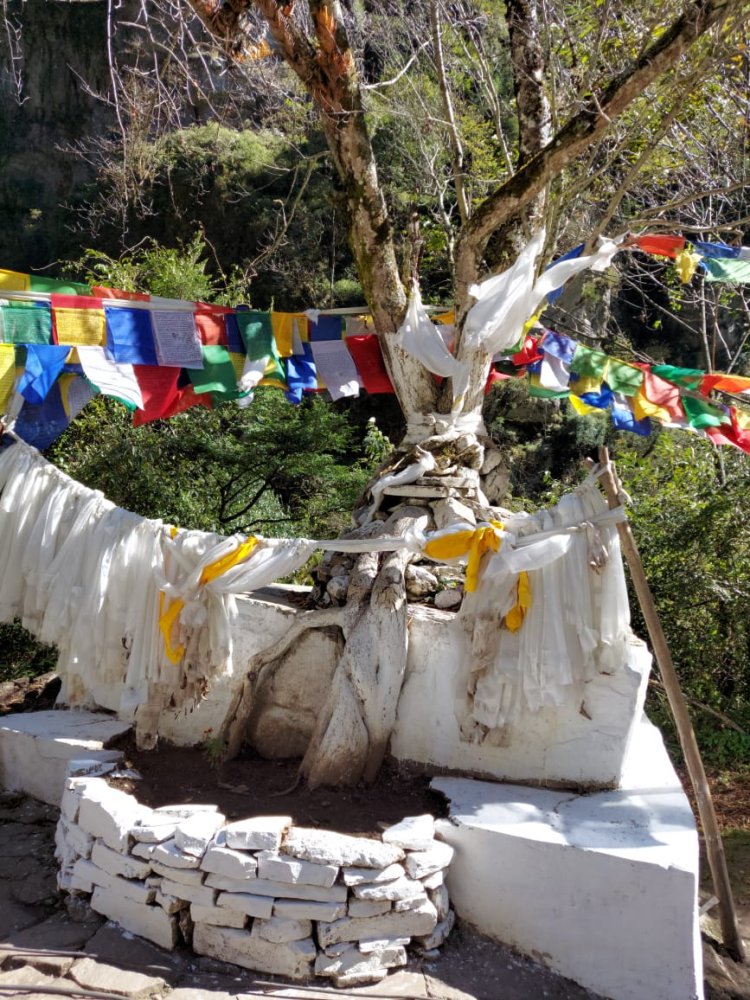
Figure2: Khenzamane Post at Sino-India Border
Tawang is a further point of contestation between India and China as it is the leading Buddhist Centre in Arunachal Pradesh. The visit by Pranab Mukherjee (the Minister of External Affairs at the time) to Tawang on the occasion of the 8th Buddha Mahotsava attested to this Indian co-optation of Tibetan Buddhism. Mukherjee told his audience that Tawang finds a special place in the spiritual and cultural history of Buddhism […]. We are very proud of your efforts to develop the state and your patriotic spirit.
He firmly put together both religion and politics by saying that Buddhism is an integral part of Arunachal Pradesh and Arunachal Pradesh is an integral part of India. The culture of Tawang is highly influenced by the Tibetans and the Buddhist way of life. Tibetans have for ages survived and progressed in the highlands of the high-eastern Himalayas with a number of monasteries, known as Gompas. Once contingent to that glorious free Tibet and ruled from Lhasa, the region forms the western parts of the forested state of Arunachal Pradesh. The region has its earliest inhabitants in the Monyul Kingdom which ruled the area for over a thousand years till the 6th century. The Monpa people adopted Buddhist practices over the later centuries and in the 17th century, the mesmerizing Galden Namgey Lhatse Monastery which translates as celestial paradise in the clear night was built in the settlement of Tawang as per the wishes of his holiness the 5th Dalai Lama, Ngawang Lobsang Gyatso, who belongs to the Gelug School of Mahayana Buddhism. The 15th-century Urgelling Monastery which is the birthplace of his holiness the 6th Dalai Lama Gyalwa Tsangyang Gyatso. The large and artistic Khinmey monastery is the only major shrine of the Nyingmapa sect (red hat) of the Tawang region. The Nyingmapas were the majority sect in the Tawang region in the earlier times before the emergence of the Gelugpa sect (Yellow hat). Beyond the landscapes of the high eastern Himalayas, lies the village of Thembang which follows the Bon-Buddhist culture. In the medieval era, the village was the headquarters of a large territory ruled by the Thembang Bapu, a direct descendent of the king of Tibet.
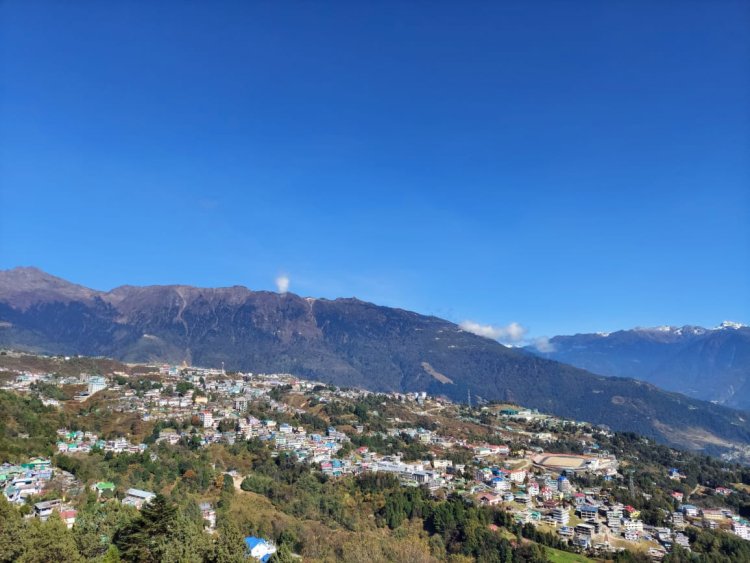
Figure 3: View of Tawang Town
The recent attack on Arunachal Pradesh’s Tawang was not just about China’s geopolitics but it was more about Tibetan Buddhism and spirituality as the next Dalai Lama could be reincarnated in the district which will ruin the chance for China to select the next incarnation. On December 9, 2022, PLA troops contacted the LAC in the Tawang sector, contested by Indian troops in a firm and resolute manner. This face-off led to minor injuries to a few personnel from both sides. The Lhaste monastery of Tawang is the oldest and second largest of Tibetan Buddhism outside of China’s control. The current 14th Dalai Lama, His Holiness 87, is reportedly not in good health, and China could hugely contest his succession. They will try to nominate a new Dalai Lama to control Tibetan Buddhism. Having control of the area around the monastery would help the PLA further push and capture the monastery. The next successor of his holiness the 14th Dalai Lama will largely dictate the amount of force China needs to employ to retain its absolute control over Tibet. While the status quo remains the same till the current Dalai Lama, however, a young dynamic Dalai Lama from Tawang could change the dynamic that Xi-Jinping has endeavoured to maintain in Tibet. Due to its religious significance and its strategic location, the Tawang region has been the focus of tensions between the nuclear-armed neighbours. It is one of the most intractable issues in the border dispute between India and China - and a potential flashpoint for future conflict.
Additionally, when the Indian government permitted the Dalai Lama to visit Twang in 2009, it contributed to further dissonance between the two countries. The Dalai Lama’s visit, with “India’s encouragement”, was denounced in China. Meanwhile, the Indian government called the Dalai Lama an “honoured guest” who was free to visit any part of India, including Tawang. He visited seven times between 1983 and 2017, which did not deter China from creating a ruckus; Beijing complained that the Lama’s religious teachings had been engineered by Delhi in an area China calls ‘Southern Tibet’. Another major event was denounced by China when Ogyen Drodul Trinley Dorje, the 17th Karmapa, fled across the Himalayas to take sanctuary in Dharamshala alongside the Dalai Lama. The picture of the two exiled religious Tibetan leaders made China furious, “China is firmly opposed to any separatist activities that might emerge in the wake of the Karmapa Buddha’s leaving Tibet for India.” Instead, China has unsuccessfully tried to build up the credibility of its own Panchen Lama figure, Gyaincain Norbu Banquin Erdeni, in part by allowing his appearance at its approved World Buddhist Forums held in China. There has been suspicion among Chinese observers that given the ethnic link between cross-border communities, Tawang can be used to whip up any future Tibetan uprising.
The border stand-off between India and China was sparked off in 1957 at the Ladakh border which led to a series of letters and notes between Indian Prime Minister Jawaharlal Nehru and Prime Minister Zhou Enlai containing claims and counterclaims. He questioned the legality of the Mc-Mohan line, thereby staking a claim over the whole of Arunachal Pradesh. The situation on the ground deteriorated, and massive clashes took place all along the border in October 1962. The war was a culmination of a series of clashes at the border. While the peace negotiations were going on in the 1980s, they were discontinued following the Sumdurung Chu incident in 1986-87. India and China share a frontier that isn't fully demarcated and the two have overlapping territorial claims. India says it is 3,488km long; China puts it at around 2,000km. Their claim of Tawang is indispensable. For China, Tawang offers an entry point to Arunachal Pradesh and the rest of India’s northeast.
Conclusion
China renamed 11 places in Arunachal Pradesh in Chinese, Tibetan and Pinyin characters in a bid to reclaim the Indian state. China’s Civil Affairs Ministry gave the precise coordination including two land areas, two residential areas, five mountain peaks, and two rivers. It further listed the categories of places’ names and their subordinate administrative districts. This is not the first time, in 2021 China came out with a list renaming 15 places in the state, triggering a sharp response from India and asserted the state will always be an integral part of India. The first set of renames came out in 2017 following Dalai Lama’s Arunachal Pradesh visit.
The traditional hard power territorial and military issues- the stamping ground of IR realism imperatives have always been the primary determinant forces in China- India relations. However, Buddhism and control over Tibet remain a domestic and foreign policy issue in which Buddhism spills across the Sino–Indian border. Consequently, Tibetan Buddhism has become an important political issue not just in domestic Chinese affairs, but also in China’s relations with India. It affects the moral legitimacy and continuing insecurity of China’s political control over Tibet. China’s attempts to control Tibetan Buddhism are also related to Chinese claims to Arunachal Pradesh, particularly with reference there to Tawang. As both sides vie for control on the ground, clashes like the recent one near Tawang only become more likely - all it would need is a spark for things to flare up.
Disclaimer: This paper is the author's individual scholastic contribution and does not necessarily reflect the organization's viewpoint.
I would like to thank our CEO and Founder, Abhinav Pandya and Usanas Foundation for facilitating the research work and field study for this paper. I would also like to thank all the people whom I interviewed for this paper. Their names can not be revealed for security reasons. And, Lastly, I would like to thank Dr. Sriparna Pathak, Associate Professor, O.P Jindal Global University, and Senior Fellow at Usanas Foundation for the constant support and Guidance to accomplish this paper.

